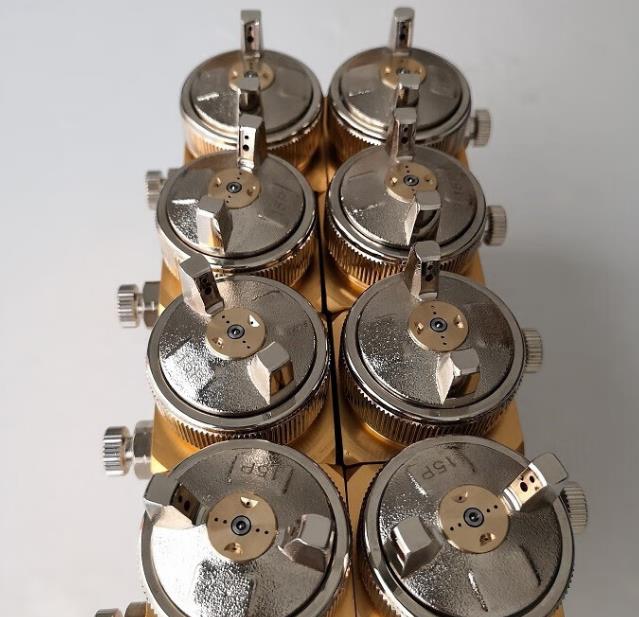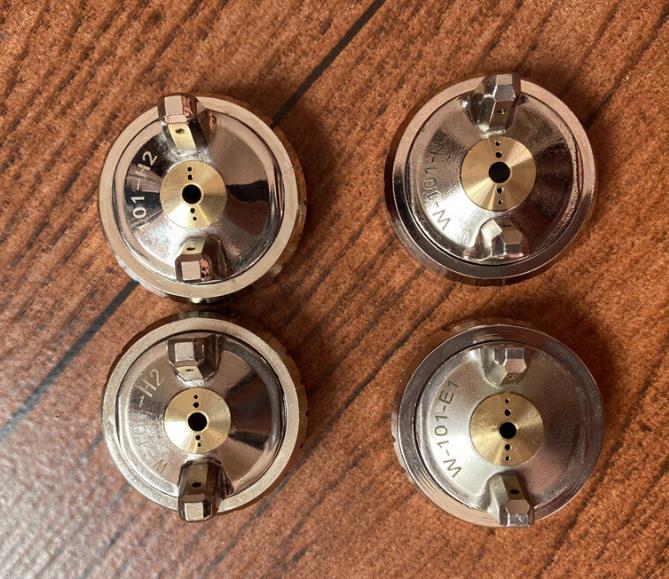We usually see a good spray gun will have a spray cap with a lot of aperture. In particular, the diameter of the spray cap of the automobile spray gun is more, so whether the atomization will be good as long as the diameter of the spray cap is more?

In fact, in the spray design, the quality of atomization is controlled and designed according to the size of the gas flow and liquid flow, so not more holes can make our spray gun atomization better.
So what is the specific relationship between the spray gun atomization and the spray cap? In fact, this is a slightly complex structural principle, we will design the different structure of the spray cap according to the role of different spray guns, in fact, there is no unified relationship, just in the spray gun mouth with the spray cap to achieve the best atomization effect!
The nozzle and needle of the spray gun are made of strong wear-resistant, corrosion-resistant stainless steel after precision machining, and the inside of the nozzle is a conical paint channel, which is consistent with the front tip of the needle and can act as a paint valve. The main role of the air spray gun nozzle is reflected in the following three aspects:
1. Provide a seat for the needle valve (the tip of the gun needle) to limit or cut off the path of the paint;
2, control the flow of paint;
3. Divert the paint to the atomizing air stream. The selection of the appropriate caliber nozzle is usually determined by the viscosity of the coating, the performance of the sprayed coating, the required coating thickness and the size of the area to be sprayed. The basic function of the spray gun is to use compressed air to knock the paint into droplets and blow them to the coated object.

At present, the viscosity of the air atomizing spray gun, the performance of the sprayed paint, the required coating thickness and the size of the area to be sprayed are determined by other parameters. The basic function of the spray gun is to use compressed air to knock the paint into droplets and blow them to the coated object.
Air nozzles provide the primary atomization method. The main atomization is accomplished through a space located between the spray nozzle and the spray cap (i.e. the central atomization hole), from which the air column and the paint flow cooperate to produce the first stage atomization of the paint. The auxiliary atomizing holes are at the same Angle as the air nozzle and are located on the end face of the atomizing cap. These holes have two functions:

1. Make the spray pattern not expand too fast, and keep the hood end face of the nozzle clean, if these holes are blocked or absent, it will cause eddy current or backflow;
2. It is particularly effective for high velocity coating atomization, which produces the second stage atomization of the coating; The fan control holes of the atomization cap provide the air flow to form a fan pattern, and without the air jet from these fan control holes, the atomized air flow would be circular rather than elliptical.
The number and size of pores on the spray gun atomization cap are designed to match the overall design of the spray gun, so the atomization quality of the spray gun cannot be judged according to the number and size of pores.
There are many factors that determine the atomization effect, the most important atomization effect is the porosity on the gun cap
There are three types of air holes in the gun cap
1, the main atomization hole: the role is to form a vacuum, suction paint
2, auxiliary atomizing pores: the role is to promote the spray of paint
3, fan control pores: the role is to control the shape of the fog beam


